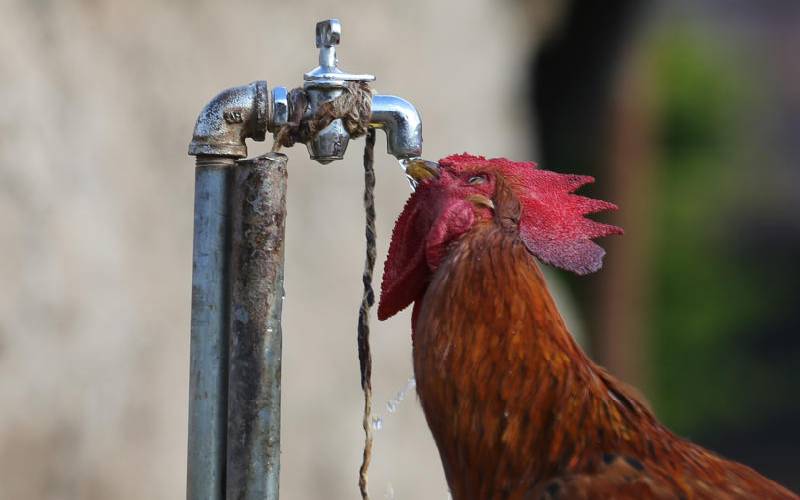
“The wars of the next century will be about water,” said former World Bank Vice President Ismail Seragelding in 1995. While it sounds like a doomsday prophecy, we cannot afford to casually dismiss it.
According to Lauren Risi, an Environmental Change expert, while countries are yet to go to war over water, people lose their lives every day because of bad water management, diminished access to safe and clean water and even violent conflict over water resources.
A key resource that all people depend on for survival, water has also become a weapon in a political conflict. In February, India’s Prime Minister Narendra Modi threatened to cut back on water flowing through its rivers to neighbouring Pakistan as a retaliatory measure against terrorist attacks.
Closer home, the Nile has for four years been at the centre of a dispute between Ethiopia and Egypt following Ethiopia’s decision to build a mega dam on the Blue Nile tributary. This left Egypt, which relies on the Nile for 90 per cent of its water, in fear that Ethiopia would control the flow of the river.
While conflicts over water are not new, they are now more frequent due to ballooning human population, industrial and agricultural activities and increased water scarcity as a result of climate change. Last May, 11 people were killed in Marsabit due to conflict over a watering point between Kenyan and Ethiopian herders.
Fresh water is one of our most precious resources, sustaining ecosystems, economies and life on earth as we know it. We can no longer ignore the link between the availability of this resource and the threat of climate change.
Climate change induces extreme weather events such as droughts and floods resulting in reduced predictability of water availability; decreases water access, quality and quantity; threatens economic development; impacts on our health and well-being and negatively affects food security. This vicious cycle has been exacerbated by the widespread degradation of water towers globally.
Indeed, it is impossible to discuss water availability without talking about its source - water towers. Simply put, these are forested mountain areas that play a critical role in the availability of water; they are sources of rivers and streams; regulate flow of rivers; prevent run-off; mitigate floods and influence rainfall patterns. It is our responsibility to ensure that water towers are conserved and protected.
However, the conservation of water towers which include Mt Kenya, Aberdares, Mau Forest Complex, Mt Elgon and Cherangany Hills has faced numerous challenges. Agricultural and industrial expansion, deforestation, over-grazing, illegal charcoal production, forest fires and illegal settlements have reduced our forest cover to a meagre 7.2 per cent. In total, there are 18 gazetted water towers in Kenya and several others spread across the country proposed for gazettement.
Consequently, we have witnessed reduction in water levels in dams and rivers, prolonged droughts, floods and reduced access to clean water. These have in turn led to crop failure, increase in diseases due to poor sanitation and constant water rationing measures.
At Kenya Water Towers Agency (KWTA), we are determined to protect, rehabilitate and conserve all critical water towers. We are doing so through strategic partnerships. Currently, we are a key player in the government’s National Tree Planting Campaign, which seeks to increase forest cover to 10 per cent by 2022.
In addition, we are fronting the Kenya Water Towers Policy and Bill, 2019, which seeks to strengthen our mandate in coordinating water towers conservation.
The private sector has the unique opportunity in the journey toward ensuring sustainable water supply, not just through sponsorships, but by taking a leading role in the reforestation of our water towers.
Corporates and NGOs such as Total Kenya, EABL and Hearts of Green Organisation have been key partners in water towers restoration initiatives. EABL has planted over one million trees countrywide in the last 10 years, restored over 250 hectares of the Mt Kenya Water Tower, as well as promoted cooperation between stakeholders in the use and management of water resources through forums such as the Clean Water Conference held in Kisumu last year.
Individuals and communities alike must take up the challenge, with the realisation that protecting our water sources not only guarantees a sustainable supply, but also prevents conflicts and promotes peace. At least 10 per cent of every land parcel should be covered with trees. This means all public and private institutions, communities and individuals should plant trees in 10 per cent of their lands. This will enable us achieve the envisaged 10 per cent tree cover.
Prof Tanui is Ag Director General, KWTA
 The Standard Group Plc is a multi-media organization with investments in media
platforms spanning newspaper print operations, television, radio broadcasting,
digital and online services. The Standard Group is recognized as a leading
multi-media house in Kenya with a key influence in matters of national and
international interest.
The Standard Group Plc is a multi-media organization with investments in media
platforms spanning newspaper print operations, television, radio broadcasting,
digital and online services. The Standard Group is recognized as a leading
multi-media house in Kenya with a key influence in matters of national and
international interest.
 The Standard Group Plc is a multi-media organization with investments in media
platforms spanning newspaper print operations, television, radio broadcasting,
digital and online services. The Standard Group is recognized as a leading
multi-media house in Kenya with a key influence in matters of national and
international interest.
The Standard Group Plc is a multi-media organization with investments in media
platforms spanning newspaper print operations, television, radio broadcasting,
digital and online services. The Standard Group is recognized as a leading
multi-media house in Kenya with a key influence in matters of national and
international interest.










